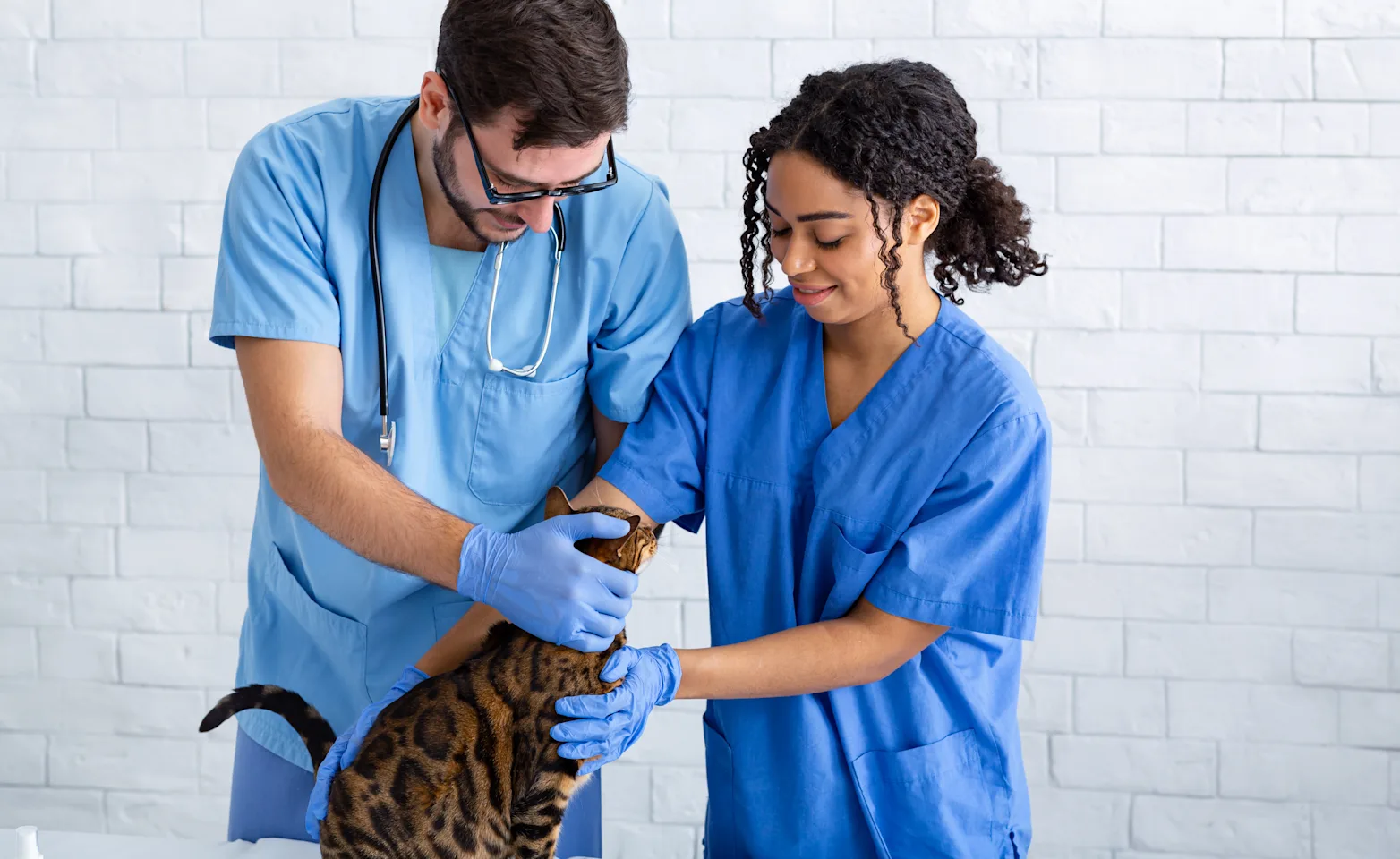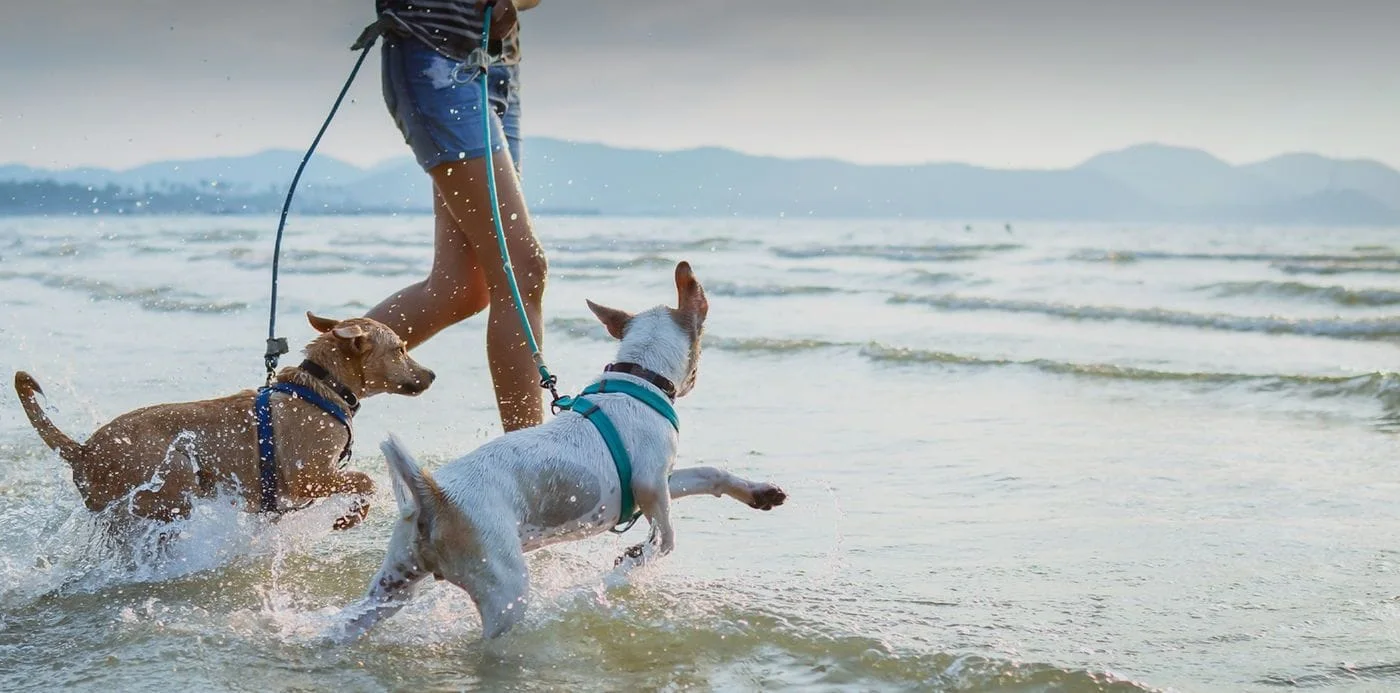Everything You Need to Know About tplo surgery: Benefits, Risks, and Recovery
Everything You Need to Know About tplo surgery: Benefits, Risks, and Recovery
Blog Article
Why Animal Rehabilitation Is Crucial: the Benefits of Vet Solutions for Your Family pet's Recovery
Pet rehab is a crucial component of recuperation for animals dealing with injuries or disabilities. Vet services provide vital assistance via tailored rehab plans that resolve private needs. These plans often include pain monitoring, physical treatment, and nutritional assistance. Understanding the various facets of pet rehab can illuminate its value in improving recovery results. What specific advantages do these services offer, and exactly how can they transform a pet dog's healing trip?
Recognizing Animal Rehab
Animal rehabilitation includes a range of healing practices targeted at bring back the health and performance of hurt or impaired animals. This field integrates different strategies, including physical treatment, hydrotherapy, and occupational treatment, customized to meet the specific needs of each animal. Recovery experts analyze a pet's problem, establishing customized treatment strategies that may include workouts to strengthen muscular tissues, boost wheelchair, and enhance general health. The procedure not just concentrates on physical healing but also addresses psychological and behavioral aspects. Pets commonly experience stress and stress and anxiety following an injury, making psychological health and wellness considerations vital in recovery. By producing a supportive atmosphere, therapists can assist animals restore their confidence and adjust to their new circumstances. With normal sessions, animals can experience considerable improvements, ultimately resulting in a far better lifestyle. Overall, understanding animal rehabilitation highlights its importance in advertising recuperation and boosting the bond between family pets and their owners.
The Duty of Pain Administration in Recovery
How necessary works discomfort management in the recuperation of hurt pets? It plays an essential duty in helping with recovery and improving the total wellness of pet dogs. Appropriate pain management not only reduces pain however likewise advertises movement, allowing animals to take part in rehabilitation activities required for recuperation. When discomfort is successfully taken care of, animals often tend to respond positively to treatment, resulting in quicker recovery outcomes.Veterinarians use different techniques to analyze and attend to pain, consisting of drugs, acupuncture, and alternative treatments. By customizing pain monitoring techniques to the specific demands of each animal, vets can assure that pet dogs continue to be calm and cooperative throughout their recuperation trip. Furthermore, decreasing discomfort helps in reducing tension, which can hinder recovery and lengthen recovery times. To sum up, effective discomfort administration is important for boosting the recovery procedure and enhancing the quality of life for damaged animals.
Physical Treatment Strategies for Pet Dogs
Numerous physical therapy strategies are offered to help in the recovery of family pets recuperating from injuries or surgeries (tplo surgery). These techniques can boost flexibility, eliminate discomfort, and promote healing. Restorative workouts, for example, help enhance muscles and enhance joint function, allowing pet dogs to regain their physical capacities gradually. Manual treatment, which includes massage and mobilization, can ease tension and enhance blood circulation, adding to a quicker recovery.Other strategies such as passive variety of motion exercises encourage joint flexibility and decrease rigidity. In addition, electrical excitement treatment might be utilized to stimulate nerves and muscles, promoting recovery and discomfort relief.Veterinary experts often customize these strategies to every family pet's certain requirements, guaranteeing a comprehensive rehabilitation plan. By executing these physical therapy methods, family pets can experience enhanced lifestyle and a much more successful recovery from their disorders. The integration of these techniques right into recovery programs is crucial for suitable recovery results
Advantages of Hydrotherapy for Rehabilitation
Hydrotherapy uses considerable benefits in animal rehabilitation, specifically in enhancing mobility. This water-based treatment advertises pain alleviation while offering convenience to injured or recouping pets. In addition, it helps with strength-building exercises that add to total physical recuperation.
Boosted Mobility Improvement
As pets recover from injuries or surgeries, enhanced flexibility typically becomes a main objective of their recovery. Hydrotherapy acts as a beneficial device in accomplishing this purpose. With water-based exercises, pets can take part in low-impact movements that assist in joint mobility and reinforce muscle mass without the tension of weight-bearing activities. The buoyancy of water sustains their bodies, enabling raised variety of activity and wheelchair renovation. Furthermore, hydrotherapy motivates far better balance and coordination, which are necessary for recovering regular activity patterns. Normal sessions can result in significant progress in an animal's physical capabilities, ultimately enhancing their lifestyle. This method not just aids in recovery however also promotes a much more energetic and fulfilling way of life post-rehabilitation.
Discomfort Alleviation and Convenience

Remedy for discomfort is an important aspect of pet recovery, and hydrotherapy substantially contributes to this process. By utilizing water's buoyancy, hydrotherapy reduces joint stress and reduces pain during activity. This healing strategy provides a comforting environment where pets can take part in gentle exercises without the full weight of their bodies affecting their recovery. The warm water stimulates blood circulation, advertising recovery while likewise urging relaxation. In addition, hydrotherapy sessions can be tailored to satisfy the certain requirements of the pet, making certain ideal comfort. As family pets experience decreased pain and increased convenience levels, their total determination to take part in rehab tasks frequently boosts, causing a more effective recuperation journey. As a result, hydrotherapy works as a crucial device in enhancing discomfort alleviation and comfort during rehabilitation.
Strength Structure Exercises
Strength-building exercises play an important duty in the rehab process, with hydrotherapy offering one-of-a-kind benefits. This type of therapy uses water resistance to boost muscular tissue stamina without putting too much stress on the joints. The buoyancy of water sustains the pet's weight, allowing for more secure activity and enhanced variety of activity. In addition, hydrotherapy can improve cardiovascular wellness and advertise overall fitness, aiding in faster recuperation from injuries or surgeries. The regulated atmosphere also lessens the risk of reinjury, making it an excellent alternative for family pets requiring recovery. Regular hydrotherapy sessions can bring about visible enhancements in flexibility, stamina, and endurance, ultimately boosting the family pet's top quality of life and capacity to return to normal tasks.
Value of Personalized Rehabilitation Strategies
Custom-made rehabilitation strategies are crucial for resolving the unique needs of each pet, making sure personalized therapy methods. These plans enable reliable progression tracking and necessary changes, cultivating ideal recuperation outcomes. In addition, an alternative method can boost the overall health of the pet, advertising a much more detailed rehab experience.
Individualized Treatment Approaches
While many recovery programs adopt a one-size-fits-all strategy, the one-of-a-kind demands of each animal demand customized therapy strategies for optimal healing. Personalized rehab plans think about different factors, consisting of the pet's species, age, medical background, and specific injuries or conditions. By tailoring treatments, vets can address each pet's special obstacles, taking full advantage of the effectiveness of the recovery process. Individualized plans might incorporate various techniques such as physical therapy, hydrotherapy, and healing exercises, guaranteeing that the therapy lines up with the pet's capacities and progress. Additionally, customized approaches foster a more powerful bond in between the animal and the caretaker, promoting an extra engaging and supportive healing atmosphere. Eventually, personalized treatment is vital for achieving finest possible outcomes in animal recovery.
Development Tracking and Adjustments

Holistic Healing Methods
Holistic recuperation approaches are important for efficient pet rehabilitation, as they emphasize the value of personalized therapy strategies tailored to each animal's certain needs. This method considers the physical, psychological, and environmental aspects affecting healing. Personalized rehab plans may consist of a combination of physical therapy, nutritional therapy, and behavior modifications. By addressing these diverse aspects, vets can improve the overall health of the animal and promote a faster healing. Additionally, such customized approaches assist in a much deeper understanding of the family pet's unique obstacles, resulting in extra efficient interventions. Eventually, holistic healing approaches not just boost physical wellness yet likewise add to the animal's psychological and emotional security, ensuring a comprehensive rehab experience.
The Influence of Nutrition on Recuperation
Nutrition plays a vital function in the recuperation procedure for refurbishing animals, often determining the rate and performance of recovery. A well-balanced diet regimen supplies the necessary nutrients that sustain cells repair, enhance the body immune system, and enhance general vigor. Healthy protein is specifically vital, as it aids in muscle rebuilding and healing from injuries. Vital fatty acids, vitamins, and minerals additionally add to decreasing inflammation and advertising optimal mobile function.Veterinarians regularly highlight the value of tailored nutrition plans, considering each animal's particular needs, age, and health condition. Appropriate hydration is just as essential, as liquids promote nutrition absorption and help in cleansing. By ensuring that animals get ideal nutrition, caretakers can substantially enhance their possibilities of an effective healing, bring about better lasting wellness results. Inevitably, nutrition offers as a foundational aspect in the rehabilitation journey, supporting animals in reclaiming stamina and durability post-injury or health problem.
Success Stories: Pet Dogs That Thrived After Rehab
Effective rehab tales are plentiful, showcasing the resilience of pets that have actually gotten rid of significant obstacles. Take, for instance, Bella, a golden retriever that suffered serious injuries from a car accident. With devoted vet treatment and a complete rehab program, she regained her flexibility and returned to her lively self, much to her owner's pleasure. Max, a senior pet cat diagnosed with joint inflammation, experienced exceptional enhancement with a combination of physical therapy and discomfort administration. His newfound dexterity permitted him to appreciate his preferred sunbathing places again. An additional inspiring instance is that of Coco, a rescued greyhound who conquered anxiousness via therapy and socialization methods, enabling her to prosper in her new home. These success stories exhibit the transformative power of pet rehabilitation, emphasizing that with the right assistance, pet dogs can not only recover but lead fulfilling lives, enriching the bonds they show their family members.
Regularly Asked Questions
How much time Does the Rehab Process Usually Take for Pets?
The rehabilitation procedure for family pets normally varies based upon the injury or condition, varying from a few weeks to a number of months. Specific progress, treatment type, and commitment to workouts greatly influence the total duration of healing.
Exist Any Type Of Dangers Connected With Pet Rehabilitation?
Animal rehabilitation might bring risks such as exacerbation of injuries, inappropriate methods leading to discomfort, or insufficient monitoring during recuperation. These factors can prevent progression and impact the general efficiency of the rehab process.

Can All Pets Gain From Rehab Services?
Not all pets may need rehab, however several can benefit significantly. Recovery solutions can boost flexibility, minimize discomfort, and improve total health, particularly for those recouping from injuries, surgical procedures, or persistent problems.
Just How Can I Prepare My Animal for Recovery Procedure?

What Indications Suggest My Pet Dog Needs Recovery?
Indicators suggesting a pet might require rehab consist of difficulty strolling, hopping, reduced task levels, reluctance to leap, or indications of discomfort. Observing these actions can trigger owners to seek specialist assessment and treatment for their animals.
Report this page